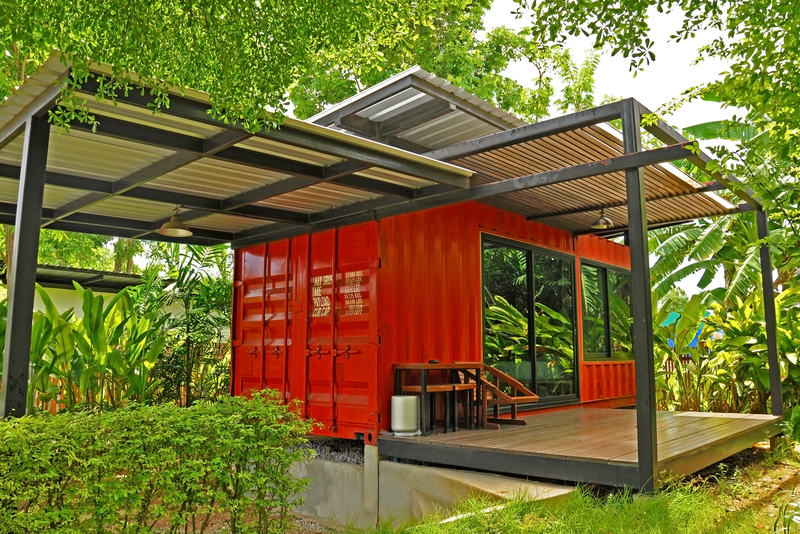Waste Reduction Methods for the Conscious Home
Living consciously in today's world means being aware of our everyday choices, especially those that impact the environment. One of the most powerful steps individuals can take is to adopt waste reduction methods in the home. By minimizing what we throw away, we can significantly reduce our carbon footprint, conserve resources, and create a cleaner, healthier planet for future generations. This comprehensive guide will explore a range of practical yet effective strategies for anyone aspiring to maintain an eco-friendly home and embrace sustainable waste management practices.

Why Is Waste Reduction at Home Important?
Households are major contributors to landfill waste. Every product we buy, use, and dispose of affects the environment--not just in our communities but across the globe. Waste reduction at home addresses numerous issues:
- Conserves raw materials and reduces energy consumption.
- Lowers greenhouse gas emissions from landfills and incinerators.
- Protects natural habitats by easing demand for resource extraction.
- Saves money for families by promoting mindful consumption and reusing goods.
- Encourages habits that align with a zero waste lifestyle and sustainable living.
With effective waste reduction methods for the sustainable home, we create living spaces aligned with our values and contribute to a better, greener world.
Step 1: Assess Your Home Waste
Start with a Waste Audit
Before taking action, it's important to understand what types of waste your household generates most. Conducting a simple waste audit can help:
- For a week, separate trash into categories: recyclables, compostables, landfill waste, and special waste (like electronics).
- Track which items fill up your bins fastest--food scraps, packaging, plastic, etc.
- Identify avoidable items (like single-use plastics, excess packaging, or unwanted mail).
This audit will reveal specific patterns and highlight key areas to focus your home waste reduction efforts.
Step 2: Embrace Reduce, Reuse, Recycle--and Beyond
The 5 R's of Waste Reduction at Home
The traditional "Three R's"--Reduce, Reuse, Recycle--form the core of most waste reduction methods in the home. Today, leading eco-advocates expand on this model with five R's:
- Refuse: Say no to products that create unnecessary waste (such as freebies, disposables, or over-packaged goods).
- Reduce: Limit what you purchase and consume to what you truly need.
- Reuse: Opt for items that are durable, repairable, or can serve multiple purposes.
- Recycle: Sort waste correctly and follow local guidelines to ensure materials are recycled.
- Rot: Compost organic waste to return nutrients to the earth and keep it out of landfills.
When you prioritize the R's in this order, you'll maximize your positive impact and minimize your household waste footprint.
Practical Waste Reduction Methods for Every Room
Kitchen Waste Reduction Strategies
- Buy in bulk to reduce packaging.
- Meal plan to avoid food waste.
- Use reusable containers and wraps instead of plastic bags or cling film.
- Set up a compost bin for food scraps and coffee grounds.
- Choose glass, metal, or bamboo utensils and storage instead of plastics.
- Switch to cloth towels and napkins instead of paper products.
- Avoid single-serve snack packs and bottled beverages.
Bathroom Waste Minimization
- Replace disposable razors with reusable or safety razors.
- Switch to bar soaps and shampoo bars to avoid plastic bottles.
- Use washable cotton rounds or cloth wipes for makeup removal.
- Choose compostable toothbrushes and biodegradable dental floss.
- Buy in bulk and refill containers for hygiene products.
Waste Reduction in the Laundry Room
- Wash full loads to maximize efficiency and reduce energy and water waste.
- Use concentrated detergent formulas or soap nuts to minimize plastic waste.
- Skip fabric softener sheets--try wool dryer balls instead.
- Air-dry clothes to save energy.
- Donate or repurpose clothing instead of discarding them.
Living Room and Home Office Tactics
- Go paperless with electronic statements and bills.
- Set up recycling for mail, magazines, batteries, and ink cartridges.
- Choose second-hand furniture or upcycle older pieces.
- Share books and media or borrow from the library.
- Repair electronics where possible rather than replacing them.
Outdoor and Garden Waste Solutions
- Practice grasscycling--leave grass clippings to decompose in place.
- Start a compost pile or bin for yard waste, leaves, and select food scraps.
- Make mulch from trimmed branches or leaves.
- Propagate plants from cuttings, and use recycled materials for planters.
Shop Smart: Reduce Household Waste Before It Starts
Conscious Consumerism
Make your dollars count! Waste reduction for the conscious home begins at the store. Here's how you can shop smarter to prevent waste:
- Bring reusable shopping bags and produce sacks.
- Opt for products with minimal, recyclable, or compostable packaging.
- Buy durable goods with extended warranties or repair programs.
- Avoid impulse purchases--plan your shopping lists carefully.
- Support brands committed to sustainability and product stewardship.
Embrace the Sharing Economy
- Rent, borrow, or swap infrequently used items (tools, party decor, books).
- Join local Buy Nothing groups or online exchange platforms.
- Host neighborhood swaps for kids' clothes, toys, or household items.
Composting: Nature's Best Waste Reduction Tool
Did you know that up to 30% of the average home's waste can be composted? Composting diverts organic matter from landfills and returns it to nourish the soil. Whether you have a garden or live in an apartment, there's a composting method for everyone:
- Backyard compost bins for food scraps and yard waste.
- Worm bins (vermicomposting) for small spaces.
- Municipal compost collection programs in many cities.
- Bokashi buckets for easy indoor decomposition.
Compost fruit and vegetable peels, coffee grounds, eggshells, leaves, and more while avoiding meats, dairy, and oils. The end result is rich, natural fertilizer for your plants and a big reduction in your household's climate impact.
Upcycling and Repurposing: Creative Waste Solutions
Give Materials a Second Life
Before tossing anything out, ask: Can it be repaired, repurposed, or upcycled? Upcycling means transforming waste into new items of value. Examples include:
- Mason jars as pantry storage or vases.
- Worn t-shirts cut into cleaning rags.
- Old furniture painted or reupholstered.
- Glass bottles as lighting fixtures or planters.
- Egg cartons for seed starters.
Involving the whole family encourages creativity and fosters a sustainable mindset.
Recycling Done Right: Avoid "Wishcycling"
Proper recycling is an essential part of waste reduction in the green home, but many people inadvertently contaminate recycling streams by "wishcycling" (placing non-recyclables in the bin, hoping they'll be processed). To recycle effectively:
- Review your local recycling guidelines--they vary widely by region and city.
- Rinse containers, and keep recyclables clean and dry.
- Avoid including items like plastic bags or greasy pizza boxes; these are often not recyclable curbside.
- Take e-waste, batteries, and hazardous materials to designated drop-off centers.
- Return plastic bags and film to store collection sites if accepted.
When in doubt, find out! Don't wishcycle--recycle with the confidence that comes from knowing local rules.
Support and Spread the Waste Reduction Movement
Engage the Household
Involve every family member in sustainable waste reduction at home:
- Assign age-appropriate tasks for sorting waste and composting.
- Gamify recycling and reducing, rewarding efforts to waste less food or packaging.
- Educate children about the environmental impact of waste and start young with good habits.
Advocate in Your Community
- Connect with neighbors to organize bulk purchases or share resources.
- Participate in community cleanups and recycling events.
- Encourage local businesses to adopt less-wasteful practices or implement take-back programs.

Overcoming Common Obstacles in Home Waste Reduction
- Lack of recycling access:
- Seek out local collection points or advocate for better services in your area.
- Limited time:
- Start small; focus on high-impact habits and automate where possible (such as online bill pay to cut paper waste).
- Resistance in the household:
- Share success stories and visible results to build motivation.
Every improvement helps! Remember, the goal is progress, not perfection.
Conclusion: Building a Low-Waste, Conscious Home is Achievable
Adopting waste reduction strategies for the sustainable home is a journey of continual learning and improvement. By assessing your waste, following the five R's, composting, recycling properly, and making mindful consumption choices, you can dramatically cut down on the trash your household sends to landfill. These practical and creative waste minimization techniques not only benefit the planet--they also inspire others to join the movement for a cleaner, more sustainable future.
You don't need to overhaul your home in a day. Choose a few conscious waste reduction methods and implement them step by step. Over time, you'll develop systems that work for your family and enjoy the satisfaction that comes from living in harmony with your values. The conscious home is one where every choice serves both the people who live there and the planet we all share.
Ready to reduce waste and create a home that truly makes a difference? Start today--and watch the impact grow!